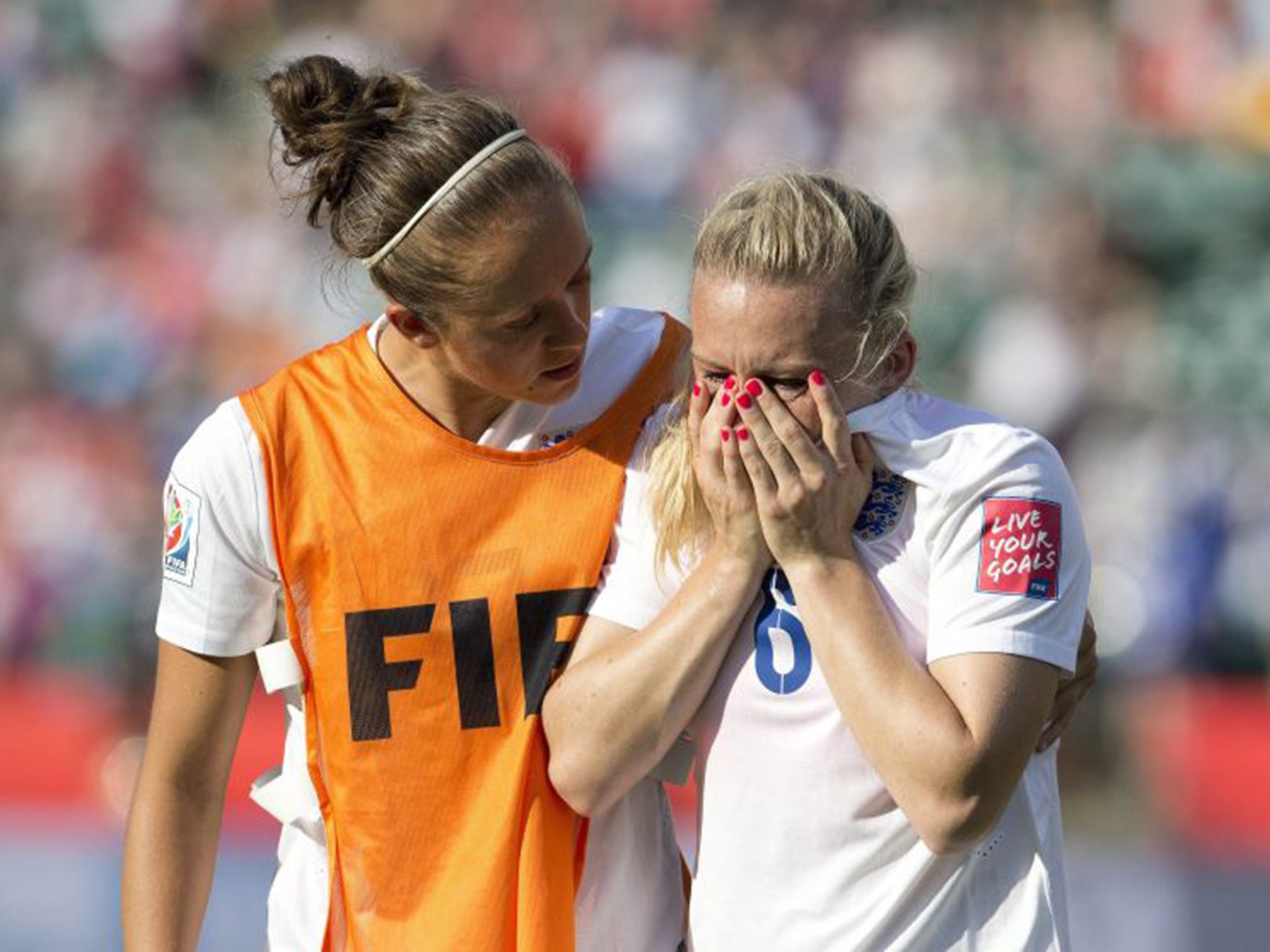Women's World Cup 2015: Super League crowds must grow for England's heroics in Canada to be true turning point
Gates have risen significantly in the last two years, but the average is 892 in the first division and 326 in the second

During the 2012 Olympics, Great Britain’s women footballers beat Brazil at Wembley, watched by 70,584 people. Less than three weeks later nine GB players were on view when Everton played Arsenal in a meeting of the FA Women’s Super League’s top two teams. The “Olympic effect” drew Everton’s biggest crowd of the season, but an attendance of 618 was somewhat underwhelming.
Those involved in the women’s game will thus be waiting with nervous concern for the gate figures when the WSL resumes on Sunday 12 July. More than 2.4m viewers watched some part of England’s Women’s World Cup semi-final defeat to Japan in the early hours of Thursday morning and more than 11 million have watched at least 15 minutes of a match during the tournament. Viewing figures have usually been above average for the slot they were scheduled in.
These are big numbers, but experience shows it will not be easy to persuade those viewers to leave their sofa and actually attend a WSL match. England sold 55,000 tickets for their Wembley friendly against Germany in November but less than 6,000 watched their pre-World Cup send-off against China in Manchester – despite zero TV coverage.
There is a concern that what is happening may just be the British love of a big event. Men’s rugby union has taken time to convert the 2003 World Cup triumph into decent attendances at club level. Even then, the occasional huge gate at Twickenham and Wembley remains at odds with a Premiership regular season average, outside those events, of around 11,000.
Gates in the WSL have risen significantly in the last two years, but the average is 892 in the first division and 326 in the second. Only Notts County, who play their matches at Meadow Lane and market them well, and leaders Chelsea, who play at Ryman League Staines Town, are averaging more than 1,000. While it is possible that Notts County Ladies, who drew 2,057 fans earlier this season, could start getting higher gates than a men’s team recently relegated to League Two, their ticket prices are much lower. Indeed, most WSL tickets are less than £10, with concessions below £5.
The task for the FA, and WSL clubs, these next few months is to market their games to people drawn in by the World Cup. How many will even know that Liverpool, the team of Fara Williams, play at Widnes, or Birmingham, with Karen Carney and Jade Moore, at Solihull Moors?
Only one team has a stadium they can really call their own, Manchester City, and even they share a purpose-built 7,000-capacity ground on the Etihad campus with the men’s junior sides. City, with five of Wednesday’s England players including Lucy Bronze and Steph Houghton, ought to be best-placed to capitalise on any boom.
Of course, attracting fans is only part of the FA’s challenge. Growing participation is an even bigger goal. Eni Aluko used to hide the fact she played football for fear of being teased. That has to change.The “We Can Play” initiative, which seeks to fight parental prejudice at girls playing, is already underway.
More players means better players and this raises the standard of the WSL which helps retain fans. In the meantime, England’s performance may help lure more quality foreign players to the WSL (an expanded fixture list would also help).
A further boost would come from the Premier League insisting every club has a properly funded women’s team. Chief executive Richard Scudamore recently made the laughable boast – in the Independent on Sunday – that no one is a greater friend to the woman’s game. He must prove it by bringing clubs like Manchester United into the sport.
The next diary date is the first Women’s FA Cup final at Wembley, between Chelsea and Notts County on 1 August. With several England players on show, including the ill-fated Laura Bassett, the FA hope for a large attendance drawn from general supporters of the women’s game. But that, of course, is another “big event”. More relevant will be the size of the crowds on Sunday week.
Subscribe to Independent Premium to bookmark this article
Want to bookmark your favourite articles and stories to read or reference later? Start your Independent Premium subscription today.

Join our commenting forum
Join thought-provoking conversations, follow other Independent readers and see their replies